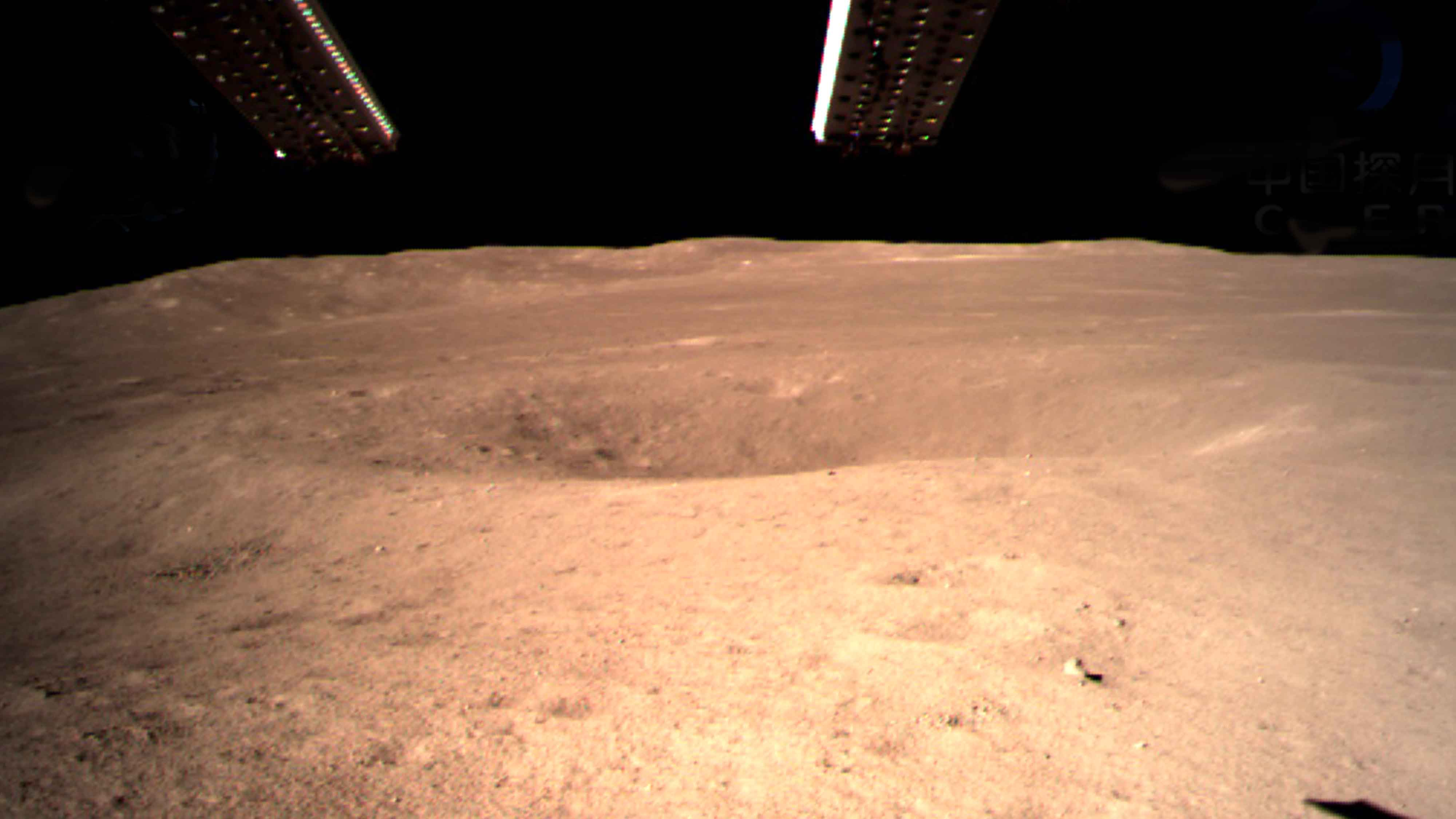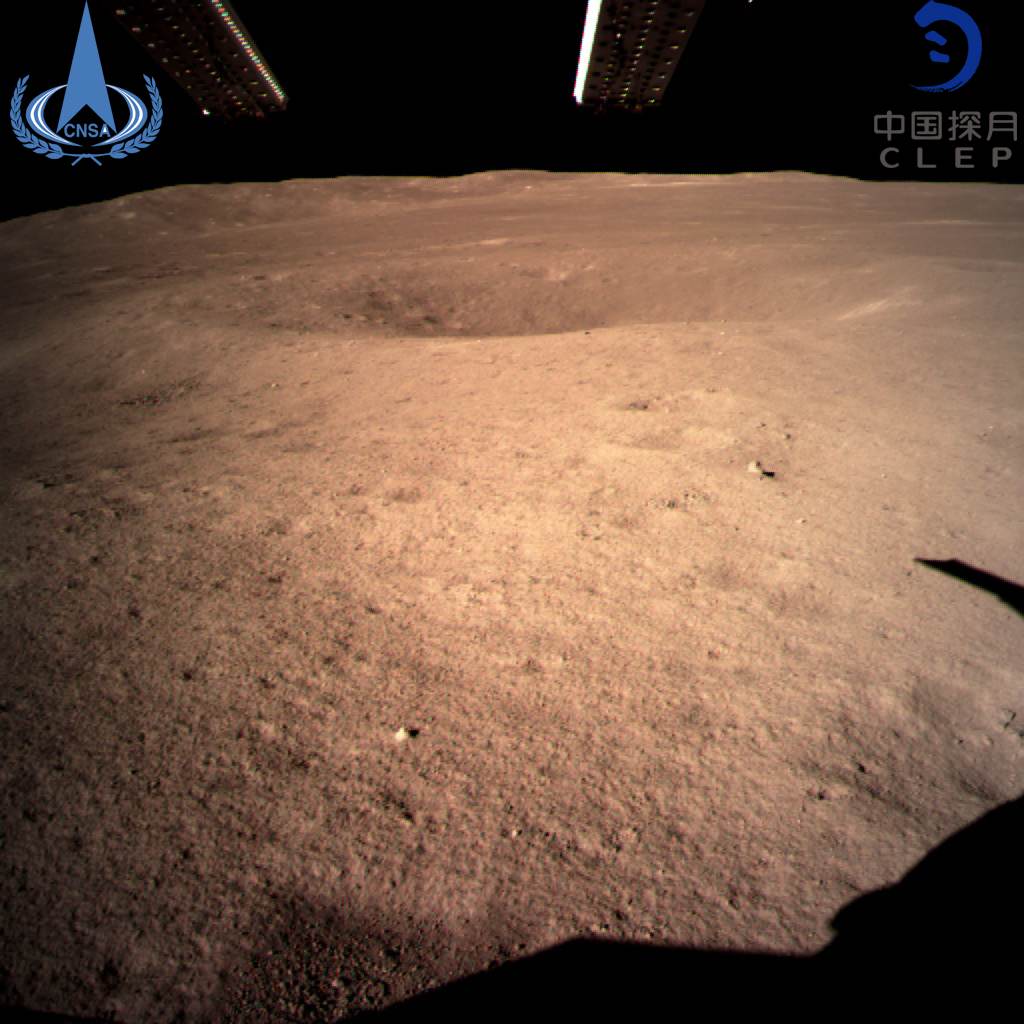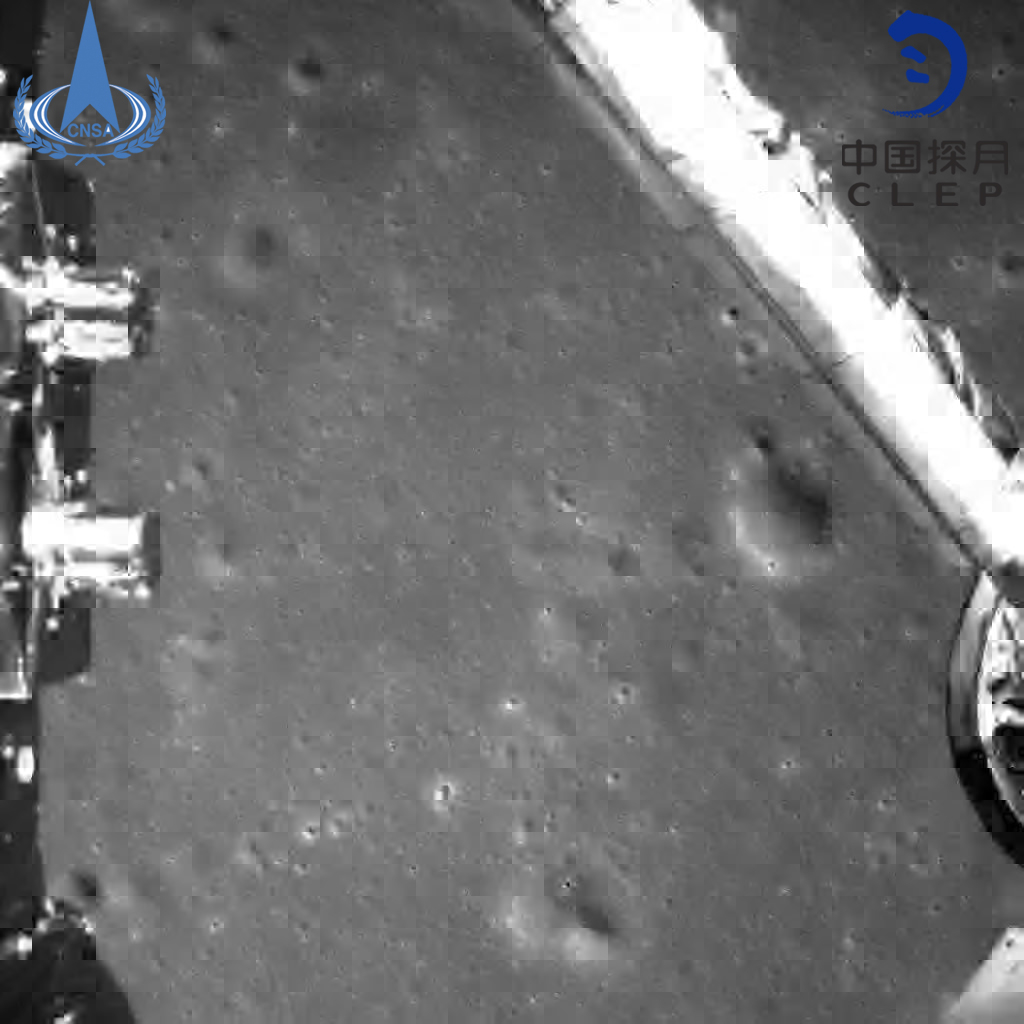
Tech & Sci
12:09, 03-Jan-2019
China's Chang'e-4 makes historic landing on Moon's far side
Updated
18:24, 11-Jan-2019
By Hu Yiwei, Wu Lei
00:55

China's Chang'e-4 probe successfully landed on the far side of the Moon at 10:26 a.m. BJT Thursday. This is the first ever soft-landing on this previously uncharted area.
The dark side is never visible from the earth due to a phenomenon called tidal locking. But the probe sent back the world's first close picture of the Moon's far side via the relay satellite Queqiao (Magpie Bridge) which is operating in the halo orbit around the second Lagrangian (L2) point of the Earth-Moon system.

The south side of the landing site on the far side of the Moon /CNSA Photo
The south side of the landing site on the far side of the Moon /CNSA Photo
The Chang'e-4 – which includes a lander and a rover – is now expected to study the mineral composition and shallow lunar surface structure of the Moon's far side, as well as perform low-frequency radio astronomical observation.
It will be a key step in revealing the mysterious side of the Moon, which never faces the Earth.

An image captured during the landing process of Chang'e-4 lunar probe /CNSA Photo
An image captured during the landing process of Chang'e-4 lunar probe /CNSA Photo
The exact landing area is called Aitken Basin's Von Karman crater, and it is about 24,000 kilometers across and 13 kilometers deep. Chinese scientists believe the spacecraft's landing on this huge crater would enable them to collect some new information about the Moon's mantle, which is the name for the layer below the surface.
One of the key challenges and targets of the project is to validate communication technology via a relay satellite. The probe is communicating with Earth via the Queqiiao relay satellite, which was launched in last May to enable communication between the ground controllers and the Chang'e-4 probe.

An image captured after the probe's soft landing /CNSA Photo
An image captured after the probe's soft landing /CNSA Photo
Several different scientific programs were developed for the mission by Chinese universities, and there are also four international payloads jointly developed by scientists from Germany, Sweden, Netherlands, Saudi Arabia and China. According to the China National Space Administration, over the next few months, they will conduct all these experiments accordingly.
The Chang'e-4 probe blasted off nearly a month ago on December 8, 2018, from southwest China's Xichang Satellite Launch Center.

SITEMAP
Copyright © 2018 CGTN. Beijing ICP prepared NO.16065310-3
Copyright © 2018 CGTN. Beijing ICP prepared NO.16065310-3